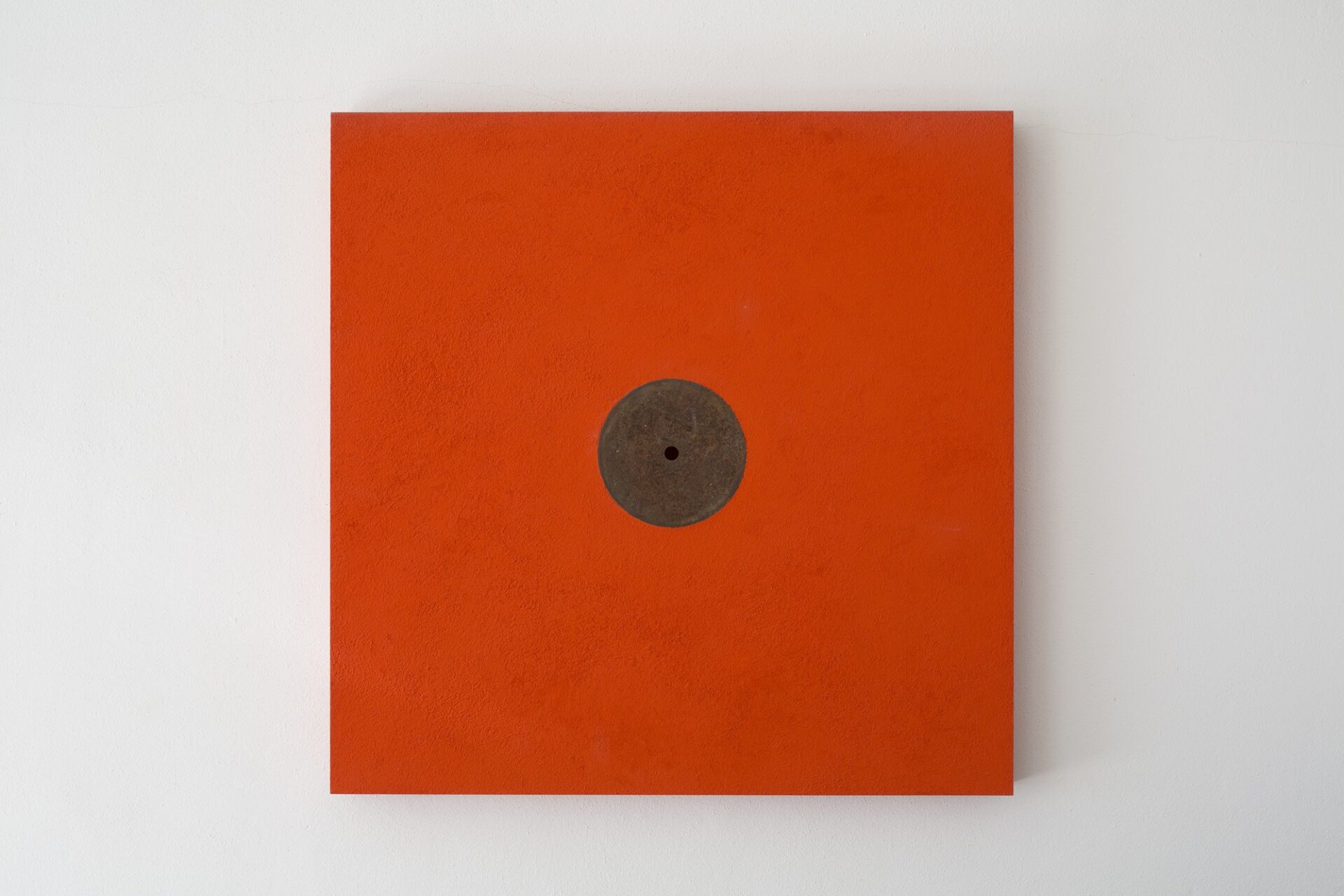This relief is one of five reliefs from this period that contains a metal found object—in this case a rusted cast iron disc, the origin of which is unknown. The other four reliefs include prefabricated aluminum, stainless steel, and iron found objects (two works). It is related to a much earlier piece from 1962 [untitled, 1962] installed in the Architecture Studio, which has a centrally placed copper disc that measures ten inches in diameter. While the copper disc has a hole in the center that measures one-quarter inch, the cast iron disc has a center hole with a one-inch diameter.
The copper-disc relief from 1962 is forty-eight inches in both exterior height and width with a four-inch depth; this cast iron work from 1992 measures forty-six and a half inches in both directions, retaining the four-inch depth. The material is also different: the copper work is sand-painted Masonite mounted on wood boards, while the reliefs in the Ranch Office [untitled, 1989; untitled, 1989; untitled, 1990; untitled, 1992; untitled, 1992; untitled, 1992; untitled, 1993] are all made from standard sheets of Douglas fir plywood, some painted, some sand painted, some unpainted.
For this work and many of the works that Judd installed in the Ranch Office, Judd used cadmium red light acrylic paint. As Judd wrote of color in 1993, “Material, space, and color are the main aspects of visual art. . . . Color is like material. It is one way or another, but it obdurately exists. Its existence as it is is the main fact and not what it might mean, which may be nothing.”1
